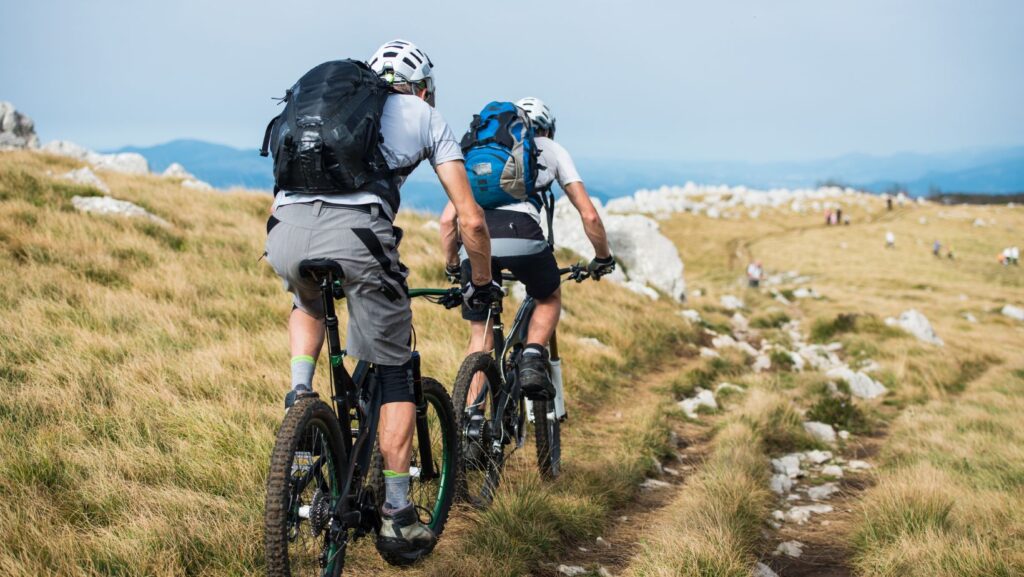As more cyclists turn to pedal-assist rides for adventure and accessibility, one question continues to surface: are electric mountain bikes (e-MTBs) legal on trails? The answer isn’t as straightforward as a yes or no. It depends heavily on where you’re riding, what classification of bike you have, and how trail systems are governed. For riders across Canada and beyond, understanding trail access laws is as important as choosing the right gear.
This article explores everything you need to know before hitting the trails, from federal and provincial guidelines to landowner rules and best practices for riding responsibly. Whether you’re new to the e-MTB community or a seasoned rider exploring new regions, it’s crucial to know where your bike is welcomed—and where it’s not.
In fact, many enthusiasts start their journey into pedal-assisted adventure by exploring the full range of electric mountain bikes designed for trails, climbs, and backcountry excursions. But before you buy or ride, read on.
Understanding e-MTB Classifications
Before diving into trail legality, it’s important to understand how electric mountain bikes are categorized. Most jurisdictions divide them into three classes:
- Class 1: Pedal-assist only, with no throttle, and a maximum assisted speed of 32 km/h (20 mph).
- Class 2: Equipped with a throttle and can provide power without pedalling, also capped at 32 km/h.
- Class 3: Pedal-assist with no throttle, but capable of speeds up to 45 km/h (28 mph).
Trail access often hinges on these classifications. Class 1 bikes tend to be the most widely accepted on mixed-use and natural-surface trails, while Class 2 and 3 bikes are more restricted due to their speed or throttle capabilities.
Who Governs Trail Access?
In Canada, there’s no single national policy that governs e-MTB access. Instead, trail usage rights fall under the authority of:
- Federal agencies (like Parks Canada)
- Provincial park systems
- Municipal recreation departments
- Private landowners and conservation authorities

Each of these bodies can—and often do—set their own rules. For instance, while some Crown lands allow e-bikes without restriction, many national and provincial parks restrict access to Class 1 bikes only, if they allow e-bikes at all.
Trail Types and Access Restrictions
Not all trails are created equal. Here’s how access tends to break down:
- Shared-use trails (for hikers, bikers, equestrians): Class 1 e-MTBs are often allowed, but local rules apply.
- Singletrack mountain bike trails: These can be off-limits to all e-bikes depending on trail stewardship organizations.
- Motorized trails (ATV/snowmobile routes): All classes of e-MTBs may be permitted, but the terrain may not be ideal for typical e-MTB builds.
- Protected nature reserves: Generally prohibit any type of motorized vehicle, including e-MTBs, regardless of classification.
If in doubt, contact the managing authority or check their official website for clarification before you ride.
Provincial Differences Across Canada
Access regulations vary significantly by province:
- British Columbia: BC Parks generally does not allow e-bikes on non-motorized trails unless otherwise posted.
- Alberta: Alberta Parks allows Class 1 e-MTBs on some designated bike trails, but not all.
- Ontario: Conservation authorities and municipalities decide access—some are e-MTB friendly, others are not.
- Québec: Known for stricter rules, Québec trails often prohibit motorized bikes on singletrack.
Always confirm current rules with the appropriate provincial body or trail association. Policies can evolve, especially as electric mountain bikes become more common.
The Role of Trail Stewardship Groups
Volunteer-run organizations and non-profits often maintain local trail networks and may set usage rules. These groups prioritize sustainability and trail integrity, so decisions around e-MTB access are typically based on factors like:
- Trail wear and erosion potential
- User safety and speed differences
- Environmental sensitivity of the terrain
Supporting these organizations not only helps you stay informed—it also contributes to better trails for all riders.
Insurance, Liability, and Local Bylaws
Even if a trail allows e-MTBs, there may be liability considerations. Some municipalities require additional insurance for powered vehicles, while others regulate e-bike use through local bylaws. These rules can affect where you can ride legally, especially on urban or suburban trail networks.

It’s also worth noting that if you’re riding an e-MTB that’s been modified to exceed speed or power limits, you may void your coverage or even be riding illegally under Canadian law.
Trail Etiquette Still Matters
Even when permitted, riding an electric mountain bike on trails comes with responsibility. Speed, noise, and rider behaviour all impact how others perceive the e-MTB community. To preserve access for everyone:
- Always yield to hikers and slower trail users.
- Avoid skidding or cutting switchbacks.
- Stick to designated trails—don’t bushwhack or explore closed paths.
- Ride within your ability, especially when descending at assisted speeds.
Trail courtesy and responsible use are the best ways to keep access open for future riders.
Resources to Help You Stay Updated
The e-MTB landscape is rapidly evolving, so staying informed is key. Here are a few reliable resources:
- IMBA Canada: Offers guidelines and advocacy for mountain biking, including e-MTB trail access updates.
- Ontario Trails Council: A comprehensive source for trail locations and local usage rules.
- Parks Canada: Check for specific e-bike regulations in national parks.
- Local mountain biking associations or clubs: Many publish access maps and trail status alerts.
Staying Ahead of the Curve
As technology changes and rider demand grows, so too will trail policies. Electric mountain bikes are no longer a niche—more riders are choosing them for fitness, accessibility, and fun. That said, the success of e-MTB trail integration depends on how we ride today.
Understanding where you can and can’t go, staying respectful of nature and other users, and choosing the right class of e-bike can make the difference between a seamless trail experience and a disappointing one.
Being informed is not just good practice—it’s a responsibility every rider should take seriously.



